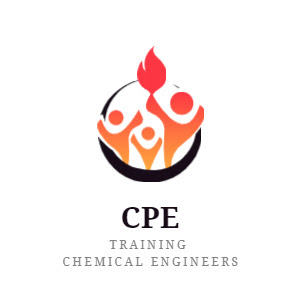Hii Everyone, hope you are going well..!!
Welcome back to PharmaCalculations.com! In today’s post, we’ll dive into Liquid-Liquid Extraction (LLE) — a critical separation technique widely used in the pharmaceutical and chemical process industries. We’ll explore its principle, significance, address some common questions, and walk through a design case study, followed by a scale-up of an LLE column with real-world engineering calculations.
During my initial career, i got a chance in commissioning of an Liquid Liquid Extraction column alongside equipments like ATFD, FFE etc, where i gained most of my knowledge on equipments. Thanks to our managers YLN Reddy & K Karun Kumar for giving me the opportunity for exploring critical equipments at an early stage.
Liquid-Liquid Extraction, often abbreviated as LLE, is a separation method where a solvent is used to selectively extract a compound from one liquid phase into another immiscible liquid phase. This technique is especially valuable when the desired compound is thermally unstable (unsuitable for distillation) or when mixtures have close boiling points.
Pharmaceutical Applications:
-
Removal of residual solvents
-
Purification of APIs (Active Pharmaceutical Ingredients)
-
Washing out of byproducts
-
Extraction of fermentation products
Principle of LLE
At its core, LLE relies on the distribution of a solute between two immiscible liquids, typically:
-
Aqueous phase (usually water or buffer)
-
Organic phase (typically ethyl acetate, dichloromethane, hexane, etc.)
The solute partitions based on its distribution coefficient (KD):
where and are equilibrium concentrations in organic and aqueous phases respectively.
Common Questions on LLE
What factors affect extraction efficiency?
-
Distribution coefficient (K_D)
-
Volume ratio of phases
-
Number of stages/contact time
-
Phase densities and interfacial tension
What are the types of LLE equipment?
How do we choose continuous and dispersed phases?
-
Typically, less viscous phase is made continuous
-
Denser phase is often dispersed (e.g., water in organic solvent)
Significance of LLE in Pharmaceutical Manufacturing / Process Engineering
-
LLE allows separation of non-volatile and heat-sensitive materials.
-
It’s effective for selective removal of impurities without full distillation.
-
Scale-up is relatively easier compared to solid-liquid extraction.
-
Can be integrated with back extraction, pH adjustment, or salting-out techniques for efficiency.
Let’s assume the following lab-scale trial data as the foundation for our scale-up calculations:
Lab-Scale Trial Data (Basis for Scale-Up)
| Parameter | Value
|
|---|
| Column diameter | 0.05 m |
| Column height | 2.0 m |
| Column holdup (working vol.) | 2.0 L |
| Organic phase | 5.0 kg/hr (ρ = 900 kg/m³) |
| Aqueous (dispersed) phase | 4.5 kg/hr (ρ = 1000 kg/m³) |
| Total mass flow rate | 9.5 kg/hr |
Residence time, t = Holdup volume / Volumetric flow rate = 2 / ((5/900)+(4.5/1000)) ≈ 0.21 hr
SCALE - UP OF LLE COLUMN (ARDC)
Now, lest scale-up the product based on the lab data.
Total organic layer volume = 2500 Kgs and i've planned to complete the operation in 10 hours.
Continuous phase feed rate = 2500 / 10 = 250 Kg/hr,
Scale-up the Flowrates
Given for scale-up:
Calculate Required Column Holdup
Now calculate total volumetric flow at pilot scale:
Maintain the same residence time of 0.21 hr:
Required holdup volume = 105.6 liters.
Determine Column Dimensions (Diameter + Height)
Assume a practical column diameter = 0.25 m
Just remember that increasing the column diameter will allow us to increase the inlet feed-rates whereas increase in column height will increase the efficiency i.e., increase in purity.
Hope the scale-up part is clear for everyone.....!!
Comments are most appreciated ......!!
Create a Poll
About The Author
Hi! I am Ajay Kumar Kalva, Currently serving as the CEO of this site, a tech geek by passion, and a chemical process engineer by profession, i'm interested in writing articles regarding technology, hacking and pharma technology.
Follow Me on Twitter AjaySpectator & Computer Innovations







 Hi! I am Ajay Kumar Kalva, owner of this site, a tech geek by passion, and a chemical process engineer by profession, i'm interested in writing articles regarding technology, hacking and pharma technology.
Hi! I am Ajay Kumar Kalva, owner of this site, a tech geek by passion, and a chemical process engineer by profession, i'm interested in writing articles regarding technology, hacking and pharma technology. 
No comments:
Post a Comment